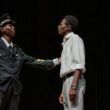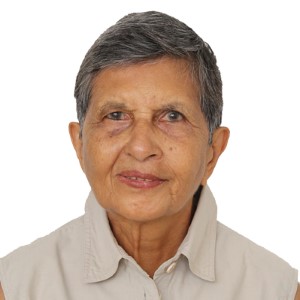This article seeks to trace the early beginnings of a left ideology in Kenya, its actors and the period under which it arose and developed.
Though we have records of actual protests organized by Mombassans against Portuguese colonialism on the East African coast dating back to the 17th century; and then later against British colonialism by Waiyaki wa Hinga, MeKatilili and others, the first incidences of a conscious anti-imperialist struggle having a left orientation become evident in British East Africa, when a group of Indians who belonged to the Ghadar Party were arrested, imprisoned, deported or hanged by the British colonialists just prior to the outbreak of World War I.
The general tendency is to date socialist and revolutionary ideology to the 1917 Bolshevik Revolution in the USSR and the Marxist Leninist theory that it generated. However, it is clear that the Ghadar Party which was formed in 1913 and its early activists and writings predate the Bolshevik Revolution. ‘Left Ideology in Kenya’ has three sections:
– ‘Left Ideology pre the Bolshevik Revolution’ by Prof. Lucien van der Walt,
– ‘Sedition Among Indians in British East Africa’ by Zarina Patel.
– ‘Left Ideology post Marxism Leninism’ by Zarina Patel.
LEFT IDEOLOGY PRE THE BOLSHEVIK REVOLUTION
By Lucien van der Walt, Neil Aggett Labour studies Unit (NALSU), Rhodes University, South Africa
Before 1917, revolutionary Marxism was just one part of a diverse, international far left. Within the West, it faced fierce competition and elsewhere, it was marginal. It faced fierce competition from currents like anarchism and syndicalism.
Anarchism, going back to Marx’s rival, Mikhail Bakunin, aimed at a decentralised, libertarian socialist society through revolutionary class struggle. It would involve common property, direct democracy including in economic planning, and the abolition of exploitation and domination, including capitalism, the state and parliament. Syndicalism was a mass anarchist strategy for building a popular counter-power through bottom-up, inclusive, revolutionary unions to bring about the new society.
Anarchism and syndicalism were very influential, in Western Europe and the USA, as well as in Australasia, the Caribbean, East Asia and the Philippines, Eastern Europe, Latin America, and parts of Africa and the Middle East. They founded the trade unions in Malaysia and China, for example, and the young Mao Zedong was an anarchist. The Spanish syndicalist movement is perhaps the most famous, but it was actually proportionately smaller than those of countries like Argentina, Peru and Portugal.
This massive impact is often forgotten. Many will be surprised to learn that Bakunin, not Marx, had the support of the majority in the First International of the 1870s, or that the four American labour activists executed in 1887 – an event commemorated annually by May Day – were anarchists.
The victory of the Bolsheviks in the Russian Revolution did not immediately change matters. In Egypt the Socialist Party founded in 1921, the immediate precursor of the local communist party, was influenced by anarchism, and widely known as al-hizb al-ibahi (‘the anarchist party’). In South Africa even the communist party’s official history concedes that “syndicalist concepts remained within the Communist Party for many years.”
By the late 1930s, however, Marxism-Leninism had started to dominate the far left. It became easy to forget that it had not always been so. This forgetting cut the left off from its complex, rich past and lent itself to basic errors. Nowadays, for instance, many assume Antonio Gramsci led the revolutionary Italian workers’ council movement of the late 1910s. In fact, Gramsci’s L’Ordino Nuovo was a fortnightly paper with a circulation of 5,000 – compared to the anarchist daily, Umanità Nova, selling 50,000, while Italian Syndicalist Union exploded from 80,000 in 1912 to 800,000 in 1920.
The Ghadar Party, founded in the USA in 1913, also cannot be understood outside of this context. Drawing much of its initial support from Sikh immigrants, it soon spread worldwide: groups existed in Afghanistan, China, India and elsewhere; its multi-lingual weekly, The Ghadar, had readers in Egypt, Madagascar, Morocco, Reunion, South Africa, Sudan and Kenya.
This worldwide revolutionary formation launched an armed revolt (‘ghadar’) in the Punjab, India, in 1915 during the First World War – anticipating the 1916 Easter Rising in Ireland, where syndicalist James Connolly was martyred.
Heavily repressed, the Ghadar Party survived: it was only formally dissolved in 1948. In India, it went on to work th the communist party and launched the Kirti Kisan Lehar (‘Workers and Peasants Party’) in 1928. The Ghadar Party drew on Sikhism, on Indian nationalism and – from the late 1920s – on Marxism, with a number of Ghadar and Kirti leaders going to Moscow.
But it was also influenced by anarchism and syndicalism, notably through Lala Har Dayal, a founder member, key leader and the editor of The Ghadar. He was secretary of the San Francisco section of the syndicalist Industrial Workers of the World (IWW) union, and the founder of the Bakunin Institute in California. Dayal advocated the ‘the abolition of private property in land and capital through industrial organisation and the General Strike,’ the ‘establishment of free fraternal cooperation,’ the ‘abolition of the coercive organisation of Government,’ an end to ‘race feeling,’ and ‘complete’ freedom for women.
While the Ghadar movement was influenced by a range of ideas, and changed over time, one legacy of the anarchist/syndicalist influence was an insistence that anti-colonial struggle be waged by and forthe mass of ordinary people – including through democratic, bottom-up unions. The struggle should create a radically different society. Rather than replacing imperial overlords with local exploiters, it would be egalitarian, bottom-up, democratic and socialist.
Thus, The Ghadar insisted that ‘All the poor would together fight/ No false hopes of support from the rich,’ and that ‘The seed of the rule of the Tyrant has to be exterminated.’ Even when the Ghadarites moved closer to Marxism-Leninism, they retained an interest in workplace self-management and decentralisation. As Maia Ramnath has noted in How the Ghadar movement charted global radicalism and attempted to overthrow the British Empire, Ghadarism was always a ‘stubbornly autonomous alternate left formation.’
SEDITION AMONG INDIANS IN BRITISH EAST AFRICA.
By Zarina Patel, Managing Editor of AwaaZ
Some extracts from a once classified document of the Colonial British Government give an insight to the history and concerns of the period before and during World War 1 in British East Africa.
‘A glance at the map issued last year with the Ghadr Directory will show how widespread the Indian revolutionary movement is. There is information on record in this office connecting every one of the places marked with a red cone in the map with Indian revolutionary propaganda. [British East Africa was one of 22 countries.]
Many of the Indians in British East Africa are not mere labourers whose object is to make money and return to India. They are colonists who intend to make Africa their permanent home.’
‘The Ghadr paper first appeared in November 1913 and it was not long before we began to hear of its circulation in British East Africa. In March 1914 the colonial authorities intercepted seven packets of Ghadrs in the mails from Europe, five of them addressed to the Secretary of the Arya Samaj and two to the Sikh Temple, Nairobi. In June 1914 the Commissioner of police, Nairobi, wrote that the Ghadr was circulating freely in the Protectorate. From May onwards copies of the Ghadr posted in British East Africa were intercepted in India and an unsuccessful attempt was made to discover the senders. During 1914 it was also proved that some persons in British East Africa were in correspondence with Indian revolutionaries in Europe.’
‘Copy of a letter which is said to have been found in the house of a prominent Indian in Mombasa. It is signed Sita Ram:
The so-called highly and Independent Power (?) should be made to feel once again, that though we are only a handful out here if we become resolute and are headed by men like the Hon’ble Mr. Jiwanji and yourself, and ably assisted by our dear patron Mr Ritch and other brothers can make them give in to our demands, which they shall be only too glad to yield at this tight hour.
It is very necessary that you should get together our brothers Patel, Sharma, Bansi Lall, Gokall Dass, and other trusted members of the community and depute men to go and quietly preach the cause.
Let brother Patel return [sic] Zanzibar to work hard and organise fast there. Providence has given us sufficient money and aid to carry out work and aims for the cause all over. He can bring us news and progress whenever he travels about to attend the Court cases at Mombasa.’
‘The same batch of papers includes several reports on the Indian contingent of the Mombasa Town Guard, which was enrolled after the outbreak of the war by Mr. Ritch and was at first commanded by him.’
‘The following paragraph appeared in the London Daily Express dated the 15th January 1916:
“At Voi, a station on the Uganda Railway, two Indian Contractors (says Reuter) were charged with assisting the enemy, who blew up a train on the line in September. The prisoners were found guilty and sentenced to death, the sentence being carried out on the following day. Other Indian fuel contractors were charged with similar offences.”’
‘NOTE BY A MILITARY OFFICER RECENTLY IN BRITISH EAST AFRICA
In East Africa I found two separate and distinct factions of Indians. There was the Borah and Khoja community who have settled out there for some generations and have been born and bred in the country. These men are markedly pro-German and as such were a danger.
The other community consisted of the contractors, carpenters, clerks, coolie labourers, etc., who have temporarily emigrated from India and have no intention of settling down in the country. A very large number of these men belong to the “Ghadr” party and keep in communication with America and Switzerland, and are rabidly anti-British.
Latterly there were signs of these two factions coming together and uniting for mischief.’
[Author’s note: The following table lists just a few of the Indian men who were charged and convicted by the British Government. The close relationship of the Ghadarites to the Indian [South Asian] anti-colonial movement in British East Africa is evidenced by the fact that K. V. Dwivedi (mentioned in this list) and L. M. Savle were among the main architects of the East Africa Indian National Congress initiated by A. M. Jeevanjee. The latter is mentioned in the above letter signed by Sita Ram: ‘……though we are only a handful out here if we become resolute and are headed by men Like the Hon’ble Mr. Jiwanji ……..]Table of charge sheet:
| Name | Address in East Africa protectorate | Occupation | Charge on which convicted | Sentence and date | Remarks |
| Bishendas R. Sharma | Mombasa | Resident Magistrate’s Court Clerk. | Martial Law Regulations, Section 4 (2). Having in his possession publications containing seditious article. | Imprisonment with hard labour for 14 years. 24 th December 1915 | |
| Allidina Dhalla | Zanzibar | Merchant | (2) Martial Law Regulations, Section 4 (2) Having in his possession a publication likely to promote disaffection or bad feeling | Death sentence by hanging 6th November 1915. | |
| Keshowlal V. Dwivedi | Mombasa | Chief Clerk High Court | Martial Law Regulations 4 (2) Circulating or having in his possession seditious publications | To suffer death by being hung by the neck until he be dead 4th December 1915 | Sentence remitted to 14 years rigorous im-prisonment. |
Left Ideology post Marxism Leninism
In northern India, members of the Sikh and Punjabi communities were imbued with a left ideology as they actively resisted British colonial rule in their region. In 1913, to avoid arrest and persecution, a group of them escaped and made its way to San Francisco in the USA. The 18th century history of the American Revolution against British colonialism resonated with the on-going struggle in India and assured the Indians of a welcome. The revolutionaries formed the Ghadar Party – Ghadar is a Hindustani word meaning ‘revolution/rebel’. The Party’s main objective was to rid India of British colonialism as well as to create a new social order. To achieve this goal it collaborated with the North Americans and Germans and later liaised with the Bolsheviks in the USSR.
The Ghadar Party soon had 10,000 active members and was able to establish branches all over the world. A few of the revolutionaries who left India travelled to East Africa; to where some of their relatives and compatriots had emigrated earlier as labour recruits for the building of the Uganda Railway. Though no concrete evidence is available, it is very probable that these revolutionaries joined or were members of the Ghadar Party. The Ghadarites in East Africa maintained a very clandestine presence and their main centre of activity remained the Punjab, but they are known to have regularly and widely distributed the Party’s newsletter, the Ghadar.
With the onset of World War 1 the British Government carried out mass arrests and executions of the Ghadarites in all their colonies. No trials were held, in British East Africa (re-named Kenya in 1920) the Ghadarites were charged with sedition – three were shot, two were hanged, eight were imprisoned and about twenty were deported back to India.
Some known names are Mr B R Sharma, Mr Lal Chand Sharma and Mr Mangal Dass, all from Nairobi; Narain Singh was hanged at the site of the Mombasa Municipal Market – his beard had been ‘snatched’ and was bleeding. A ‘brother Bishen Watchendu’ was sent away to India where he remained for two years. B R Sharma, Lal Chand Sharma, Mangal Dass and ‘Singer’ were all imprisoned in Fort Jesus, Mombasa and were sentenced to death. Chief Justice Hamilton, however, intervened at the request of Mrs Damyanti Sharma, Lal Chand’s mother, so his sentence was commuted to a prison term – the other three were hanged in Mombasa.
In his memoirs (Innocent-Prisoners of Tsavo, 2019) Lal Chand Sharma describes his imprisonment in Mombasa’s Fort Jesus, then the town’s jail, where he learnt to read and write. At the onset of World War I, the British became extremely wary of any pro-German tendencies. Supporters of the Ghadar Party used to clandestinely distribute party literature that originated from their headquarters in the USA. It was defiantly anti-British and anti-imperialist and hence, considered ‘subversive’ by the colonial government.
The Ghadarites’ leader in British East Africa was Sita Ram Acharia who was employed as a telegrapher on the Uganda Railway and served in the military branch of the East Africa Pay Corps at the beginning of World War I. He was deported to India late in 1915. One person in the group was a Punjabi named Lal Chand Jawahir Ram who worked as a fuel contractor in Voi. He was convicted of conspiring to dynamite the Uganda Railway, and was sentenced to death. The sentence was subsequently commuted to ten years’ imprisonment with rigorous labour; he was, however, released about March 1919, and sent back to India. He returned to Nairobi in August, 1921, settled here and worked for a firm of lawyers by the name of Stevens & Kindall. He was described as ‘politically minded’ by the authorities in Nairobi.
Another of the group was Tirath Ram Bali, also a Punjabi. Employed by the Uganda Railway, he was twice dismissed for seditious utterances. He regularly received the Ghadar from the USA and was a distributing agent for the newsletter. In July, 1914, he was involved in a strike by railway and public works department workers protesting against the introduction of the poll tax and the poor working conditions. He was deported to India in February 1915, and interned there. Two other leaders of the strike, L W Ritch and Mehrchand Puri were also deported. Ritch was an Englishman who sympathized with the colonized and joined them in their protests. Tirath Ram’s brother, Ganesh Das, worked as a fuel contractor in Voi and was executed for treason in November 1915. Tirath Ram himself returned to Kenya in 1926 but was charged as being a prohibited emigrant, imprisoned for two months and then sent back to India. He sailed from Mombasa on the ss Karapara on 29 December 1926. In 1932, he was imprisoned in India for his political activities.
L M Salve and Keshavlal Dwivedi were accused of being Ghadarites. They, with A M Jeevanjee, founded the East African Indian National Congress (EAINC) in 1914. The EAINC was the first nation-wide political organisation to be formed in BEA/Kenya, its objective was to forge a strong, united voice of the various Indian communities committed to demanding equality for ALL in BEA/Kenya. Jeevanjee himself appears to have had some left-leaning sentiments which became more pronounced as he personally encountered the injustices of colonialism. It is noteworthy that at no point did he ‘disown’ or even break ranks with Savle and Dwivedi in the EAINC following their arrest by the colonial authorities. Following the untimely death in July 1926 of the EAINC Secretary, Manilal Desai, Jeevanjee recruited a possible replacement he had met in the UK. Isher Dass, a Punjabi Indian, was a fiery Marxist who had close contacts with the Moscow communists and was in the UK to study the labour movement. Jeevanjee met Dass when the latter was working as a waiter in a London restaurant. In 1928, he brought him to Kenya ostensibly as his private secretary and Dass stayed in his employment till 1933. He became a formidable champion for Indian and African revolutionary rights and helped to organise the Muindu Mbingu protest demonstration in Nairobi. The bone of contention was the Colonists’ confiscation of the cattle belonging to the Kamba community on the pretext that it was diseased. Dass was in contact with at least one Ghadarite, Devinder Singh (See later).
Isher Dass was elected to the Legislative Council but at the onset of World War 11 there was a lot of disquiet regarding him among some Indians as he had accepted the post of heading the Indian Manpower Committee – its function was to recruit the reluctant Indians for Britain’s war needs. In November 1942, Dass was shot dead by two Sikh men. It is possible that Isher Dass may have supported the British war effort in keeping with Stalin’s edict that German fascism was the greater enemy.
Around 1920, Harry Thuku transformed his Young Kikuyu Association into the East Africa Association (EAA). In doing so he broke through the ethnic boundaries set by the colonists and was no doubt inspired by the structure of the EAINC. On the EAA executive committee was an Englishman by the name of Douglas Rogers. Nothing is known of his role in the EAA and KCA but he appears again in October 1962, when together with Makhan Singh, they were the first two non-Africans to be admitted to KANU. Both were Marxists. Rogers was also the editor of the Pan-Africa newspaper published by Pio Gama Pinto and was active in the Lumumba Institute until it was closed.
A group of Ghadarites in the United States and Canada, with the support of two Americans, Agnes Smedley and Jack London, travelled to Moscow to meet Lenin and study Marxism. Several of them passed through Kenya. They later linked up with the Ghadarites who were being released from jail in India and started a paper there which they called Kirti (Worker). In 1928, the Ghadar Party itself was renamed Kirti Kisan Sabha (Party of Workers and Peasants). This later merged with the Communist Party of India (CPI) which had been established in 1925. One of the persons who played a leading role at this time, Teja Singh Sutantra, passed through Kenya on his way from Moscow to India.
Interestingly in November 1936, Makhan Singh’s Labour Trade Union launched a weekly Punjabi newsletter and called it Kirti (Worker). Three months later it was renamed East African Kirti and Mota Singh, President of the Union took over the editorship from Makhan Singh. The latter was later to publicly declare that he was, and would remain, a communist. Amongst the Indian community in Kenya were many Sikhs from the Punjab, some were from Gujranwalla and Lahore and were known to Makhan Singh. Makhan Singh’s birth place was Gujranwalla and his wife’s family resided in Lahore. A few of these Sikhs were Ghadarites who kept their ideological convictions a well-guarded secret.
In Kenya, Makhan Singh met various Sikh Ghadarites who had arrived from abroad. As mentioned earlier, several of them passed through East Africa on their way to or from Moscow, a few stayed and worked in East Africa. Activists such as Harbans Lal Sarda formed a branch of the Ghadar party in Dar es Salaam, Tanganyika. Another Ghadarite, Waryamu Singh, settled in the Kisumu area. Makhan Singh certainly knew Kabul Singh, who had first come to East Africa in 1899 and worked as a Sub-Overseer on the Uganda Railway for three years, before returning to India. Disaffected and pro–German, he returned to settle in Kenya in 1933, and carried on a correspondence with Makhan Singh.
In 1928, Devinder Singh, alias Teja Singh, was the honorary secretary of the Siri Guru Singh Sabha in Nairobi and in 1931, he was employed as a clerk in Barclay’s Bank. He was a great agitator and a staunch communist with a large following. He claimed that he had organised a branch of the Ghadar party and requested that copies of its organ, Mazdoor Kisan (Worker Peasant), be sent to some twenty addresses in Kenya. He was last heard of in Zanzibar in 1932. He was one of the most active members of the Ghadar party in East Africa and was highly thought of by his party officials.
Another left-wing Sikh activist, Kalyan Singh Dhillon of India, applied for a passport in 1928 to visit Kenya, but was refused. However later, after completing his training in Moscow and being briefly imprisoned in India, Dhillon did settle in Kenya.
Suba Singh, (alias Kato) from Amritsar, who worked as a mechanic in the Nairobi Electric Light Company, was selected and sent for revolutionary training to Moscow in 1932. He was able to acquire passport No A 21423 in Nairobi. The issuance of passports to the Ghadarites is evidence that their revolutionary activities were highly secretive and remained largely unknown not only to the colonial authorities but also in Kenya’s historical records.
Ujagar Singh (alias Maroj), one of the founder members of the Railway Artisans Union, hailed from Jalhandar. He returned to Kenya in 1929 where he worked as a mason and painter, and then as a salaried priest in a Nairobi gurdwara, and joined the labour movement. He travelled together with Suba Singh in 1932 to Moscow, allegedly as a nominee of the Ghadar Party, Kenya. They stayed with Gopal Singh who was then doing a temporary job at Mombasa’s railway station. Ujagar Singh returned to India in 1935, via Nairobi. Another Ghadarite Iqbal Singh Hundal, had been to Moscow and used to give lectures to a study group in Nairobi.
Vasudev Singh was from Sheikhupura in India. He worked as a watchmaker in Nairobi and is mentioned in the Ghadar Directory as an ‘accommodation address for the Ghadar party in British East Africa’. He was in contact with George Padmore, Chairman of the International Trade Union Committee of Negro workers and a founder member of the Labour Trade Union, which was identified as a ‘Communist – Ghadar organisation,’ in the East Africa Directory. His address was PO Box 300, Nairobi. Rattan Singh, who was the conduit in Paris for Ghadarites on their way to and from Moscow, stopped briefly in Mombasa on his way to Madagascar in 1944.
In 1928, Devinder Singh, alias Teja Singh, a resident of Jhalandar and a matriculate was a sympathiser of the Akali Movement which sought to reform the Sikh places of worship or gurdwaras. He travelled to Kenya in 1926 and was between 25 and 30 years old. He was appointed the honorary secretary of the Siri Guru Singh Sabha in Nairobi and in 1931, was employed as a clerk in Barclays Bank. Notes on him say that, ‘he was said to have a great following there and to be a great agitator and a staunch Communist’. He was said to have been receiving financial help from Moscow through [Ishar Das] for his communist propaganda.
In the latter half of 1931, he wrote a letter to Bhag Singh in Canada claiming that he had organised a branch of the Ghadar Party and requested that copies of its organ, Mazdoor Kisan (Worker Peasant), be sent to some twenty addresses in Kenya. He also asked for a letter of introduction to assist those of its members whom he hoped to send to Moscow for training. He was last heard of in Zanzibar in 1932. He was one of the most active members of the Ghadar party in East Africa and was highly thought of by his party officials.
He also contributed an article to the Hindustan Ghadar for February 1932, in which he exhorted the youths to strive hard to free their country. He was issued with Kenya Passport No A 18994 valid for the British Empire and endorsed for Panama. In his application he stated that he had lost his previous passport. He returned to India in 1932 and was later executed by his party, the Communist Party of India, on a charge of betrayal.
The Ghadarites in Kenya were a close–knit group that maintained their solidarity during their return visits to India to do revolutionary work there. The Ghadar party later regrouped and several Ghadarites visited Kenya, a few even settled here and became involved in the trade union movement. Gopal Singh Chandan and Vasudev Singh, two such trade unionists, were the leading Ghadarites in Kenya. Makhan Singh had close ties with them though he himself left no records of this relationship. Post-Independence, Makhan Singh was requested by his leftist comrades in India to write a history of the Ghadar Movement in Kenya but declined to do so.
In the late 1940s, Makhan Singh and Chege Kibachia were the major promoters of left ideology in Kenya’s trade union movement. Chege Kibachia was said to be well versed in the works of Karl Marx; he organized the 1947 Mombasa general strike by 15,000 African workers and as a result was detained by the colonial government.
In 1948 a Marxist Study Group used to meet regularly in Nairobi. The participants were Makhan Singh, a team from the Daily Chronicle comprising of Govind Rawal, D K Sharda, Pranlal Sheth, Piyo Rattansi, and an Irishman by the name of T P O’Brien.
With the arrest and detention of Makhan Singh, the Declaration of the Emergency, the rise of the Mau Mau movement and arrest and imprisonment of the Kapenguria Six; left-orientated struggles became subsumed in the nationalist struggle. Pio Gama Pinto and Pranlal Sheth kept the fire burning in the early years. Fred Kubai and Bildad Kaggia led the trade union and Mau Mau movements; however, though they supported nationalist and left ideals they were not Marxists or Socialists. By 1954, the Cold War had set in and under the leadership of Tom Mboya, workers lost control of the trade Union Movement which increasingly came under the management of, and regulation by, the Government.
Independence in 1963 saw nationalists and leftists in parliament, in party structures and in trade unions. Names such as Jaramogi Oginga Odinga, Vicky Wachira, O Mak’anyengo, Z M Anyeini, K N Gichoya, G F Oduya, Tom Okello – Odongo, Dennis Akumu and Pio Gama Pinto were part of this group. As the ‘independence’ government became more dictatorial, conservative and kleptomaniac, a new group of leftists, this time based largely in the world of academia, arose to continue the struggle for genuine freedom, justice and economic security for all.
(Most of the information on Ghadarites in Kenya was sourced from a visit by Zarina Patel to the Desh Bhagat Samaj in Jalhandar, India in 2003, and from Ghadar Movement – Ideology, Organisation, Strategy by Harish K Puri, publ Guru Nanak Dev University, Amritsar, 1983.)
These days, the left retains a strong appeal. Socialist and communist parties remain active in many countries, including in Africa and Latin America. In Spain, the anarcho-syndicalist CGT is the third largest trade union federation. In Syria, where the Kurdistan Workers’ Party has moved from Marxism-Leninism to a position close to anarchism, there is an ongoing revolution in the Rojava region. However, the most obvious feature of the current political landscape is the rise of various populist and nationalist movements, which have won elections in countries as varied as Brazil, India, Italy and Zambia. This reflects the weakness of the left, and of the workers’ movement more generally. It is these forces – and not, in most cases, the left – that has ridden waves of popular anger at neo-liberal globalisation, rising inequality, insecurity and unemployment, mainstream parties and mass media, and government corruption. For the left to have a future, it needs to take stock of why it is failing to gain ground in a conjuncture that would seem ripe for it to grow.






